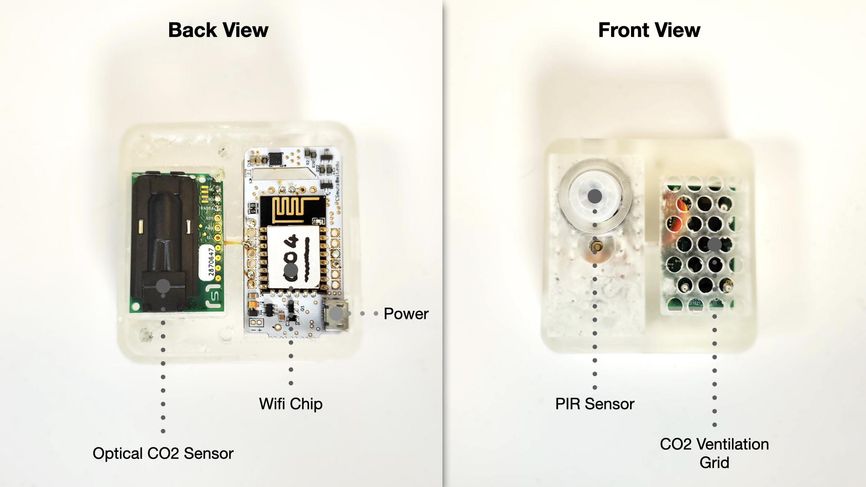A Smart Home System That Respects Privacy
By sensing human activity and adjusting the environmental settings accordingly, smart-home systems could help create more energy-efficient and sustainable buildings. However, there have been privacy concerns when it comes to these systems monitoring peoples’ activity, and smart-home systems can require heavy amounts of data crunching to learn how to respond to a given environment.
A new smart system, dubbed Chameleon, is designed to address both of these issues. It was recently tested in two different environments over the course of a month, and could predict human activity with 87 to 99 percent accuracy after just one week of training. The results are described in a study published 6 April in IEEE Internet of Things Journal.
Andres Rico is a graduate research assistant at the MIT Media Lab’s City Science Group who was involved in the study. He and his colleagues built their system around carbon dioxide and passive infrared (PIR) sensors.
“Carbon dioxide and PIR data inherently are not intrusive,” explains Rico, noting that systems based on cameras or other optical systems can raise privacy concerns.
Carbon dioxide and infrared sensing could be useful for estimating a variety of scenarios, such as the number of people in a room and how heavily they are breathing, which can indicate resting or active states. Each scenario has unique carbon dioxide and infrared signatures which can be analyzed using machine learning.
The Chameleon smart-home system uses both supervised and unsupervised machine-learning algorithms. As a result, the system already has some general knowledge on how to assess any environment, but it can also learn to distinguish the unique variables of its new environment too. This combination can reduce the time and costs associated with calibrating and maintaining the system, says Rico.
The new Chameleon wall-mounted smart system has an infrared and CO₂ sensor modules connected to a Wi-Fi-enabled microcontroller. MIT Media Lab
The MIT researchers put Chameleon to the test in two different environments: an office with a handful of employees and a classroom that had 15 to 20 occupants on any given day. All components—including the circuit board and carbon dioxide and PIR sensors—were combined onto a single unit and mounted on a wall.
Although the study ran for a month, the results show that the smart-home system was able to classify the activities being done in the rooms with high accuracy after just one week of training. “The system delivers these results within rooms that are entirely different—this is very valuable for scaling these devices to more buildings and use cases,” says Rico.
He says his team hopes to incorporate Chameleon into more real-world spaces, helping to create smarter buildings. For example, it could help a single room be used for a wide variety of activities (for example, video meeting, exercising, sleeping, and having a meal with friends) and respond appropriately to each.
“These systems can also be integrated into digital urban-planning processes so as to inform communities on how they are using spaces in order to build consensus about policies to change, operate, and maintain offices, classrooms, parks, homes, etc.” says Rico. [READ MORE]



